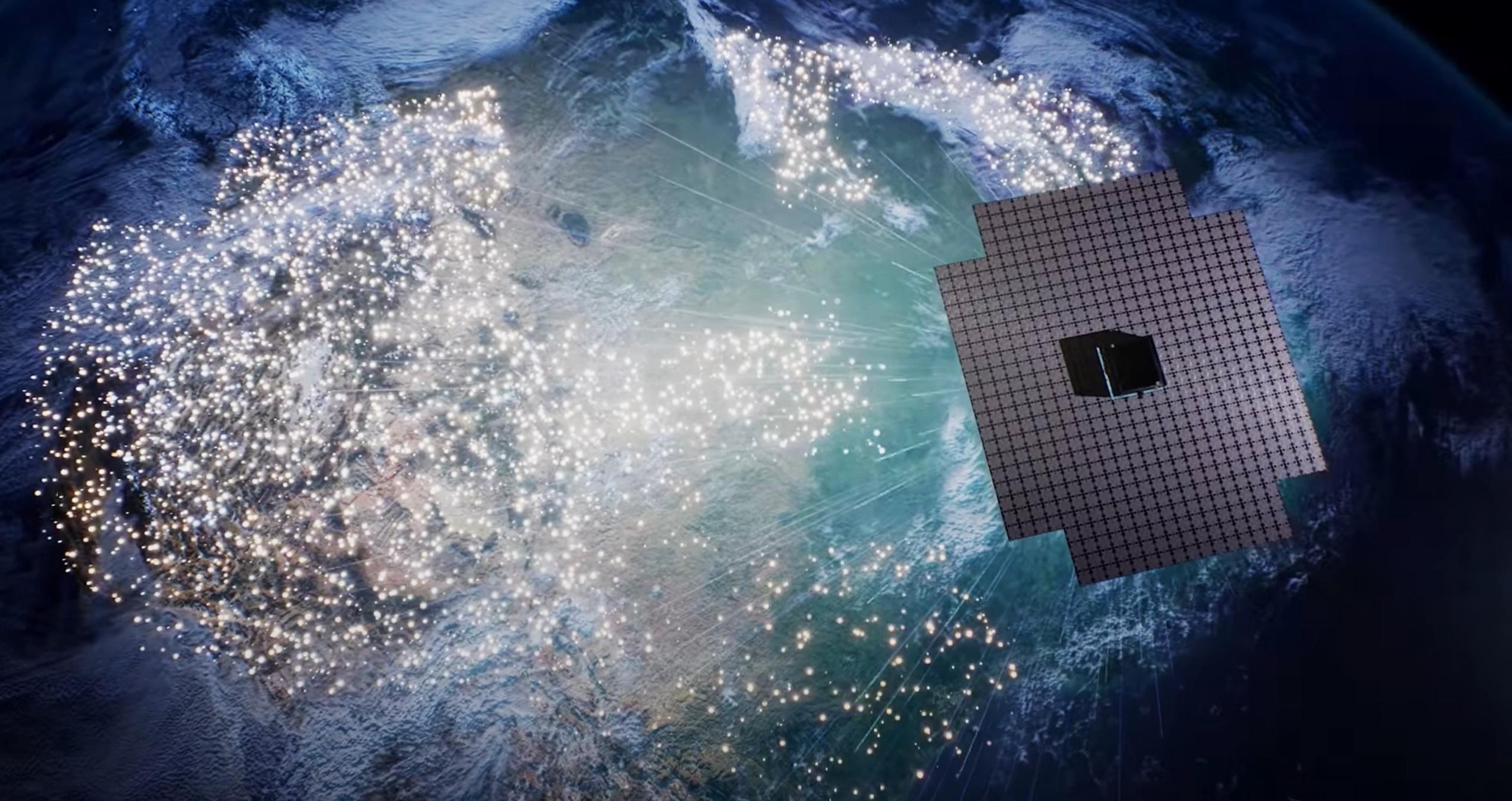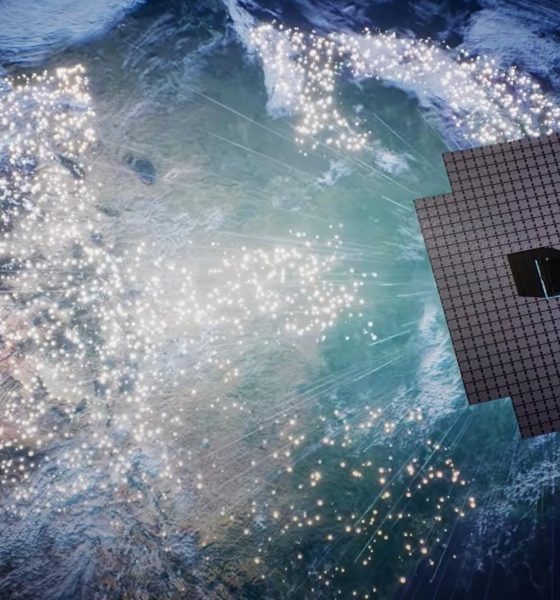

News
SpaceX to launch AST SpaceMobile’s first space-based cell towers
AST Space Mobile says it has chosen SpaceX to launch its first operational BlueBird satellite after contracting the company to launch BlueWalker 3, its first major prototype.
An SEC filing made around the same time states that AST SpaceMobile will pay SpaceX at least $22.75 million to “adjust” its upcoming BlueWalker 3 launch contract, cover an “initial payment” for the launch of BlueBird 1, and pay the reservation fee for a second launch for BlueBird 2. While only representing three probably ‘launch service agreements,’ the decision sets SpaceX up to be the company’s primary launch provider for a constellation of as many as 243 large communications satellites.
While choosing SpaceX – the most affordable and available launch provider on Earth – is far from unexpected, the satellites SpaceX will be launching for AST are anything but traditional. Driven largely by the technical requirements of AST SpaceMobile’s goal of directly connecting unmodified mobile phones to the internet through satellite in orbit, the company has completely ignored the relatively common satellite design trope of a central ‘bus’ with two solar array ‘wings.’
Instead, AST’s BlueBird satellites will launch with their antennas effectively folded around their ‘bus’ like a giant origami cocoon. Once in orbit, using a fairly elegant extension of normal solar array deployment mechanisms, the satellite’s antenna will slowly unfold and eventually return to its default shape – a giant, flat surface. For a number of reasons, AST SpaceMobile recently decided to halve the total area of its BlueBird satellites, but the new design will still feature an immense antenna with a surface area of about 450 square meters (~4800 square feet). Only the United States’ classified Orion spy satellites likely eclipse the size of the antennas AST wants to deploy in space.
Thanks to those massive antennas, though, AST says its BlueBirds will theoretically be able to “reach over 700 million unconnected people,” though it’s less clear how many users the constellation – or a single satellite – will be able to simultaneously support. Additionally, located in low Earth orbit (LEO), an uninterrupted connection will only be possible once a string of satellites have been launched into roughly the same orbital plane. Until then, the service will be intermittent – a huge boon for emergency communications in remote areas but hard to use for much else in the interim.
BlueWalker 3, a prototype satellite, aims to demonstrate AST SpaceMobile’s relatively exotic satellite design while simultaneously (with any luck) showing that it can connect hundreds or thousands of unmodified phones to the internet as if it were an ordinary cell tower. AST says it has already demonstrated the space-to-ground connection in a clever way by launching what amounts to mobile phone turned into a cubesat and then using that orbital phone to connect to a simulated cell tower satellite back on Earth. Developed for about $70 million, BlueWalker 3 will weigh about 1.5 tons (~3300 lb) and attempt to deploy a smaller but still representative 65-square-meter (~693 sq ft) origami-like antenna.
AST SpaceMobile hasn’t confirmed a launch date and is still working on the satellite prototype but its latest “summer 2022” target suggests it will launch on SpaceX’s Transporter-5 rideshare mission as early as June 2022.

News
Tesla starts showing how FSD will change lives in Europe
Local officials tested the system on narrow country roads and were impressed by FSD’s smooth, human-like driving, with some calling the service a game-changer for everyday life in areas that are far from urban centers.

Tesla has launched Europe’s first public shuttle service using Full Self-Driving (Supervised) in the rural Eifelkreis Bitburg-Prüm region of Germany, demonstrating how the technology can restore independence and mobility for people who struggle with limited transport options.
Local officials tested the system on narrow country roads and were impressed by FSD’s smooth, human-like driving, with some calling the service a game-changer for everyday life in areas that are far from urban centers.
Officials see real impact on rural residents
Arzfeld Mayor Johannes Kuhl and District Administrator Andreas Kruppert personally tested the Tesla shuttle service. This allowed them to see just how well FSD navigated winding lanes and rural roads confidently. Kruppert said, “Autonomous driving sounds like science fiction to many, but we simply see here that it works totally well in rural regions too.” Kuhl, for his part, also noted that FSD “feels like a very experienced driver.”
The pilot complements the area’s “Citizen Bus” program, which provides on-demand rides for elderly residents who can no longer drive themselves. Tesla Europe shared a video of a demonstration of the service, highlighting how FSD gives people their freedom back, even in places where public transport is not as prevalent.
What the Ministry for Economic Affairs and Transport says
Rhineland-Palatinate’s Minister Daniela Schmitt supported the project, praising the collaboration that made this “first of its kind in Europe” possible. As per the ministry, the rural rollout for the service shows FSD’s potential beyond major cities, and it delivers tangible benefits like grocery runs, doctor visits, and social connections for isolated residents.
“Reliable and flexible mobility is especially vital in rural areas. With the launch of a shuttle service using self-driving vehicles (FSD supervised) by Tesla in the Eifelkreis Bitburg-Prüm, an innovative pilot project is now getting underway that complements local community bus services. It is the first project of its kind in Europe.
“The result is a real gain for rural mobility: greater accessibility, more flexibility and tangible benefits for everyday life. A strong signal for innovation, cooperation and future-oriented mobility beyond urban centers,” the ministry wrote in a LinkedIn post.
News
Tesla China quietly posts Robotaxi-related job listing
Tesla China is currently seeking a Low Voltage Electrical Engineer to work on circuit board design for the company’s autonomous vehicles.

Tesla has posted a new job listing in Shanghai explicitly tied to its Robotaxi program, fueling speculation that the company is preparing to launch its dedicated autonomous ride-hailing service in China.
As noted in the listing, Tesla China is currently seeking a Low Voltage Electrical Engineer to work on circuit board design for the company’s autonomous vehicles.
Robotaxi-specific role
The listing, which was shared on social media platform X by industry watcher @tslaming, suggested that Tesla China is looking to fill the role urgently. The job listing itself specifically mentions that the person hired for the role will be working on the Low Voltage Hardware team, which would design the circuit boards that would serve as the nervous system of the Robotaxi.
Key tasks for the role, as indicated in the job listing, include collaboration with PCB layout, firmware, mechanical, program management, and validation teams, among other responsibilities. The role is based in Shanghai.
China Robotaxi launch
China represents a massive potential market for robotaxis, with its dense urban centers and supportive policies in select cities. Tesla has limited permission to roll out FSD in the country, though despite this, its vehicles have been hailed as among the best in the market when it comes to autonomous features. So far, at least, it appears that China supports Tesla’s FSD and Robotaxi rollout.
This was hinted at in November, when Tesla brought the Cybercab to the 8th China International Import Expo (CIIE) in Shanghai, marking the first time that the autonomous two-seater was brought to the Asia-Pacific region. The vehicle, despite not having a release date in China, received a significant amount of interest among the event’s attendees.
Elon Musk
Elon Musk and Tesla AI Director share insights after empty driver seat Robotaxi rides
The executives’ unoccupied tests hint at the rapid progress of Tesla’s unsupervised Robotaxi efforts.

Tesla CEO Elon Musk and AI Director Ashok Elluswamy celebrated Christmas Eve by sharing personal experiences with Robotaxi vehicles that had no safety monitor or occupant in the driver’s seat. Musk described the system’s “perfect driving” around Austin, while Elluswamy posted video from the back seat, calling it “an amazing experience.”
The executives’ unoccupied tests hint at the rapid progress of Tesla’s unsupervised Robotaxi efforts.
Elon and Ashok’s firsthand Robotaxi insights
Prior to Musk and the Tesla AI Director’s posts, sightings of unmanned Teslas navigating public roads were widely shared on social media. One such vehicle was spotted in Austin, Texas, which Elon Musk acknowleged by stating that “Testing is underway with no occupants in the car.”
Based on his Christmas Eve post, Musk seemed to have tested an unmanned Tesla himself. “A Tesla with no safety monitor in the car and me sitting in the passenger seat took me all around Austin on Sunday with perfect driving,” Musk wrote in his post.
Elluswamy responded with a 2-minute video showing himself in the rear of an unmanned Tesla. The video featured the vehicle’s empty front seats, as well as its smooth handling through real-world traffic. He captioned his video with the words, “It’s an amazing experience!”
Towards Unsupervised operations
During an xAI Hackathon earlier this month, Elon Musk mentioned that Tesla owed be removing Safety Monitors from its Robotaxis in Austin in just three weeks. “Unsupervised is pretty much solved at this point. So there will be Tesla Robotaxis operating in Austin with no one in them. Not even anyone in the passenger seat in about three weeks,” he said. Musk echoed similar estimates at the 2025 Annual Shareholder Meeting and the Q3 2025 earnings call.
Considering the insights that were posted Musk and Elluswamy, it does appear that Tesla is working hard towards operating its Robotaxis with no safety monitors. This is quite impressive considering that the service was launched just earlier this year.








